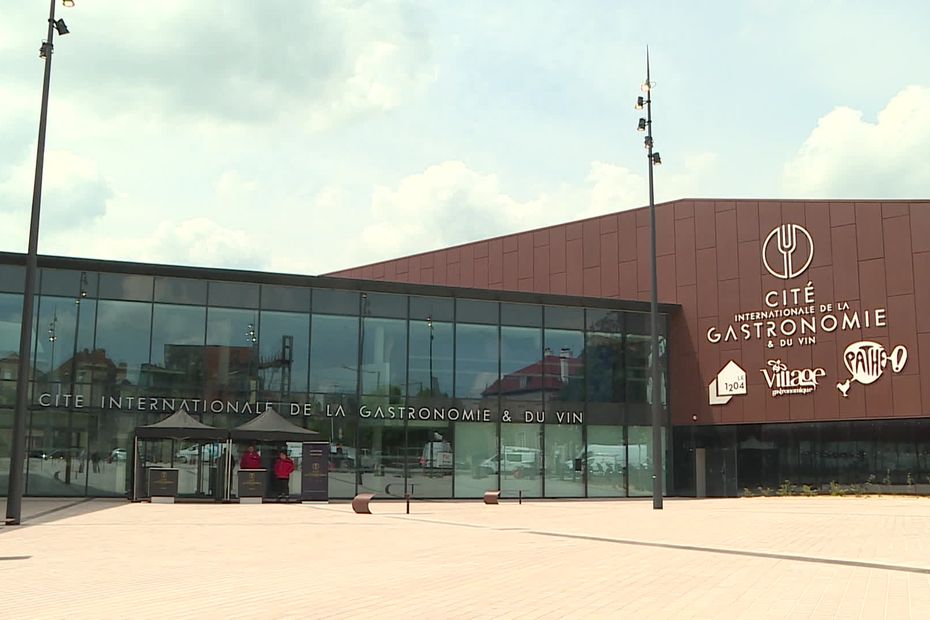The International City of Gastronomy and Wine in Dijon opens its doors on Friday 6 May. La Cité symbolizes the starting point of the Route des Grands Crus, but will also allow Dijon to rediscover its past as a wine-growing town.
Until the 1930s, Dijon was a wine town. Nearly 1300 winegrowers exploited between 2000 and 3000 ha of vines all around the capital of Burgundy.
Certain political choices as well as town planning will put an end to the production of Dijon wine… an appellation which could well be reborn, carried by the City of Gastronomy and Wine.
The Cité Internationale de Gastronomie et du Vin (CIGV) materializes the starting point of the Route des Grands Crus, which allows you to explore all the wine-growing villages south of Dijon, which have benefited of the Unesco classification of the Climats of Burgundy.
The large chapel, located on the site, was previously the sick ward. It is now devoted to the Climats of Burgundy.
The site was initially a hospice, the Notre-Dame de la Charité hospital, founded in the 13th century by Eudes III, to become the general hospital of Dijon, before moving to a new site to the east of the city in 2015. . The site was marked by 800 years of hospital occupation.
–
For Sladana Zivkovic, deputy mayor of Dijon and delegate for international relations and tourism: “The City wants to be a starting point and a point of influence, but also a link between all the rest of the city and the city center, and on the other side, the road of the Grands Crus.”
Jean-Luc Theuret is president of the Burgundy Dijon winegrowers. He immersed himself in the wine history of the city: “Dijon is a very old wine city. Already in the 5th-6th century, we find information from Grégoire de Tours indicating that Dijon is surrounded by vineyards, ‘noble grape varieties and noble beverages’. It’s been 15 centuries that we find around Dijon this past, this history and this wine culture.”
–
Plots of vines have already been replanted in Dijon, Talant, Corcelles-les-Monts since 2018, on a trial basis. Jean-Luc Theuret is very confident for the future: “Today of the 5 municipalities that still have the Burgundy appellation around Dijon, that is to say Daix, Talant, Corcelles-lès-Monts, Plombières-lès-Dijon and Dijon, we have around 200 hectares which are potentially replantable in Burgundy. All the geological and pedological studies (studies on the formation and evolution of soils editor’s note) show that there is a part of the soil totally conducive to the cultivation of vines, which reinforces History. Here there are all the elements of soil, subsoil and climates where you can make very good wine.”
–
And the end result was appreciated: “The result is rather positive. We did two or three tastings with professionals and individuals, which show that there is really a Bourgogne Dijon identity. And the professionals say ‘it’s better than we thought’. individuals have a dual approach: already very proud to say I can offer Dijon, and hope that it gives additional visibility to their city.”
Jean-Luc Theuret federates all the winegrowers who will exploit the replanted vines around Dijon: “At the level of Bourgogne Dijon, each month a different winegrower will be put forward at the CIGV, which has vines and Bourgogne Dijon wine.”
–
Moreover, the‘appellation “Burgundy Dijon” will be offered in the Oenothèque de la Cité, among the 3000 other wine references (1000 wines from France, 1000 wines from Burgundy, 1000 wines from around the world are available for tasting at the CIGV.)
Wine will not be the ambassador of the CIGV, but will still have a role to play in the identity of Dijon, a wine-growing metropolis: “Our logic is to determine an image, a specific story to tell around our Burgundy Dijon. We have something to personalize it, and it’s up to us, professionals, to work around that.”






